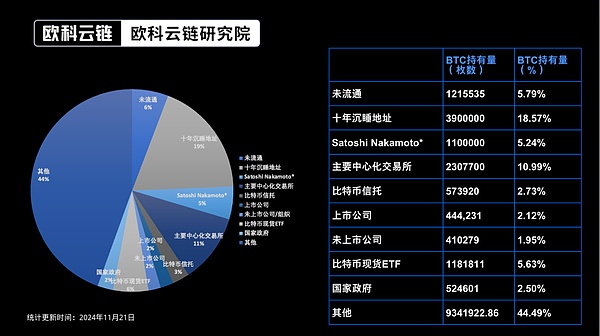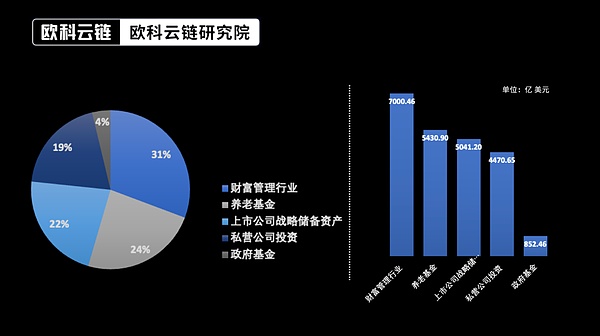On Tuesday, the reversal trend of the overnight "Trump deal" affected the Bitcoin market. The price of Bitcoin once surged to about $99,000 and then quickly fell back to below $93,000, with the largest drop of more than 6%. This is due to rumors that Israel and Lebanon are expected to reach a ceasefire agreement, which has caused market shock. Not only Bitcoin, but also gold and crude oil prices have fallen sharply.
Due to the growth performance of Bitcoin in the past month (40%+), the risk sensitivity of its investors has also been amplified. Is this 40% return a beginning or an end? The author believes that this is a short-term impact of a single point event. External macroeconomic conditions remain unchanged for a long time, and liquidity may not allow this cycle to come to an abrupt end.
Liquidity is the "cause" of risky assets
From a macro perspective, on September 18, 2024, the Federal Reserve cut interest rates by 50 basis points to 4.75%-5.00% for the first time since 2020, ending a 525 basis point rate hike cycle. Just as Bobby Axelrod said in "Billions", "Power is not everything, but without power you are nothing." The impact of the Federal Reserve on Bitcoin has caused Bitcoin to find a balance between the flood of liquidity and the need to hedge inflation.As a tool that both expands US stocks and hedges inflation, the interest rate cut releases liquidity and injects a broader space into risky assets. Potential economic fluctuations and policy uncertainties make crypto assets such as Bitcoin an option for "hedging real-world risks."

Image source: Christopher T. Saunders, SHOWTIME
With Trump returning to power and forming a new team, the increase in government spending will further boost market liquidity by implementing a series of fiscal stimulus policies to ensure "America First". Not only that, during the campaign, Trump proposed a plan to establish a national Bitcoin reserve to use cryptocurrencies to weaken the dollar's competitors. As Trump and his team consider appointing regulatory officials who are friendly to cryptocurrencies, this also promotes the establishment of a US-led international cryptocurrency regulatory framework.
However, there are also voices questioning the interest rate cut and shouting "the financial crisis is coming." According to MacroMicro's US Recession Index (Probability), the probability of a US recession in November 2024 is 24.9%. "Looking for the Sword on the Boat" Compared with the last recession caused by the financial crisis, if this round is a recession cycle, the recession may peak within 6 months. In the game of liquidity and hedging inflation, Bitcoin in this round of economic adjustment reflects more its sensitivity to liquidity changes. Image source: MacroMicro Institutional: Exceeding the 5% critical threshold Under such macroeconomic conditions, Bitcoin has also been favored by institutional liquidity. Since the opening of the Bitcoin spot ETF channel in January 2024, according to the statistics of OKLink Research Institute on November 21, the global Bitcoin spot ETF has accounted for 5.63% of the total supply of Bitcoin. 5% of the shareholding ratio is usually a key threshold in the financial industry. For example, in the regulations of the US Securities and Exchange Commission (SEC), shareholders holding more than 5% of the shares need to report to the SEC.

Bitcoin holding distribution | Image source: OKG Research, bitcointreasuries, public news
In addition to Bitcoin spot ETFs, listed companies have also taken action in such a political environment. According to incomplete statistics from OKEx Cloud Chain Research Institute, since November 6, 17 US and Japanese listed companies have announced that they hold or their boards of directors have approved Bitcoin as a war reserve asset. Among them, the most prominent MicroStrategy purchased 55,500 Bitcoins between November 18 and 24 at a price of US$5.4 billion. Currently, only 0.01% of listed companies in the world hold Bitcoin, which means that this is only the tip of the iceberg of large institutional purchasing power, and the market is still in the "elite experimental stage".
OKG Research Institute conservatively estimates that the statistical funds that will enter Bitcoin in the next year are about 2.28 trillion US dollars (Note 1). These assets can push the price of Bitcoin to around $200,000, which is consistent with the forecasts of financial institutions such as Bernstein, BCA Research and Standard Chartered Bank.

Estimated amount of funds to be invested by institutions | Image source: OKG Research (Note 1)
Bubbles first, how to hedge against rising milk prices?
The liquidity benefits have been fueled by one event after another, and the market has questioned whether it is excessive, from "Trump deal" to "Trump bubble". Tyler Cowen, author of "The Great Stagnation", believes that bubbles are conducive to the concentrated investment of capital in emerging industries and innovative projects, which will increase the market's acceptance of high-risk early projects, thereby encouraging entrepreneurs and investors to take bold risks and innovate. Just as the infrastructure left by the "Internet bubble" in the 1990s after the bursting in 2000 - fiber optic network and data center construction, laid the foundation for the Internet + era. After the Trump administration's spending (economic stimulus policy) timeline is clear, if the government spending is more aggressive, the market liquidity is excessive and there is a suspicion of "bubble", the crypto market will also be "driven up" by liquidity, allowing "value to catch up with price".
It is also important to note that in the qualitative characterization of Bitcoin, the author has proposed that Bitcoin is both an amplifier of US stocks and a hedge against real-world risks, which makes Bitcoin swing between liquidity and inflation hedging. In terms of the prices that the public perceives most, from 2019 to 2024, the average price of milk in the United States rose from about $2.58 per gallon to $3.86 per gallon, an increase of about 49.22%. During this period, Bitcoin rose by about 1025%, and gold rose by about 73%, slightly exceeding the S&P 500 (about 40%), the representative index of risky assets in the US stock market.
Even some countries choose to invest in Bitcoin to protect their wealth from inflation. For example, El Salvador and the Central African Republic have adopted Bitcoin as legal tender, and Bhutan has mined Bitcoin, trying to use its scarcity and decentralization to resist inflation risks.
Under the current macro environment, regardless of short-term fluctuations, the scarcity, decentralization and global liquidity of Bitcoin, which is fixed at 21 million pieces, remain unchanged. Its process of moving towards the role of value storage is being accelerated by the rush of institutions and listed companies to allocate. This financial experiment that started with cypherpunks will eventually find its foothold in the real world.
Note 1: The method of calculating the amount of funds:
a. Government funds and pension funds select countries, states and regions that currently allow investment in Bitcoin, and select 2% as the investment ratio, as well as different CAGRs for countries and regions as the growth rate for the next year, such as 8.9% in the United States, 4.22% in the United Kingdom, and 3% on average in Nordic countries.
b. The strategic reserve funds of listed companies are calculated based on the cash assets (market value multiplied by 5%, Microsoft's ratio is 9.5%) of the world's major stock markets (the United States, Germany, Japan, the United Kingdom, South Korea, Hong Kong, Singapore, India, Brazil, Australia, Canada, Taiwan), and multiplied by the growth coefficient (calculated, the global stock market CAGR in the past ten years is 9.68%) and multiplied by the investment ratio of 10%.
c. Private companies are calculated synchronously according to the 90% proportion of publicly listed companies that has been disclosed so far. d. According to survey reports from Morgan Stanley, Capgemini, Accenture and other institutions, 71% of high-net-worth individuals have invested in Bitcoin in the wealth management industry. The remaining high-net-worth individuals to be invested are selected, the wealth scale is multiplied by the growth coefficient of 4.5% and then multiplied by the investment ratio of 5% for calculation.
 JinseFinance
JinseFinance
 JinseFinance
JinseFinance JinseFinance
JinseFinance JinseFinance
JinseFinance JinseFinance
JinseFinance JinseFinance
JinseFinance JinseFinance
JinseFinance JinseFinance
JinseFinance JinseFinance
JinseFinance JinseFinance
JinseFinance JinseFinance
JinseFinance